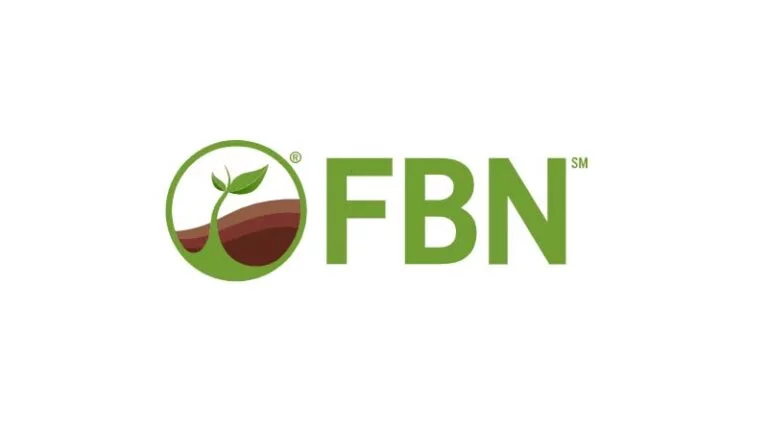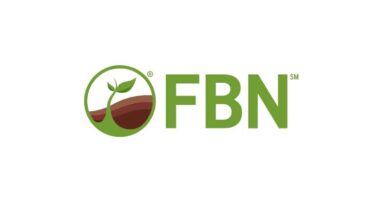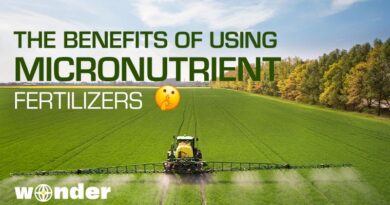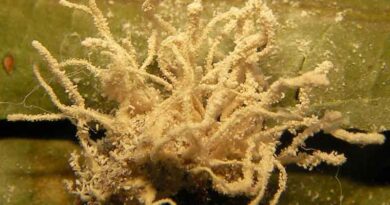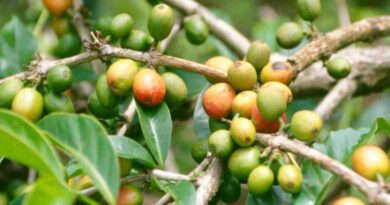What Are Micronutrients and Why Are They Essential to Plant Growth?
22 September 2023, US: Although plants use micronutrients in smaller quantities than macronutrients, they’re still essential for crop production.
What Are Micronutrients?
Micronutrients include zinc, iron, manganese, boron, chlorine, copper and molybdenum, and are normally reported on standard soil tests. Cobalt, vanadium, sodium and silicon are also micronutrients but are rarely found to be deficient.
Why Does pH Matter?
A pH of 7.0 in neutral on the pH scale of 0 to 14. Micronutrients tend to be more available when the pH is 7 to 7.5, which is slightly alkaline, while macronutrients prefer a pH between 6.2 to 7.0, which is slightly acidic.
Understanding each micronutrient mineral element’s function in plant growth will help you to determine the right nutrient applications and diagnose any potential crop production problems.
1. Zinc (Zn)
Zinc is considered immobile in both plants and soil, and is the most commonly applied micronutrient in corn and soybean production. It is important for protein, enzyme formation and cell wall integrity of plants.
There can be problems from zinc tie-ups with high calcium levels in the soil, rendering the zinc unable to be absorbed by plants. Also, high phosphorus levels can cause zinc to not be absorbed as plant growth requires, leading to zinc deficiency symptoms. These symptoms include white banding or striping on corn leaves and shortened internodes in soybeans.
Yields can be impacted from a lack of adequate zinc in the soil.
2. Iron (Fe)
Iron is an immobile nutrient. It plays a vital role in photosynthesis and plant respiration, and is also needed for nitrogen fixation in soybeans.
Iron deficiency symptoms include interveinal chlorosis of the soybean leaves, referred to as iron chlorosis, and is usually found on high pH soils of 7.5 to 8.3. Severe cases of iron chlorosis can lead to plant death.
To correct the shortage, apply iron fertilizer to the soil prior to planting. A foliar application of iron to growing plants can help to resolve the discoloration, but may be only a temporary fix requiring repeated applications.
3. Manganese (Mn)
Manganese is mobile in the soil but immobile within plant tissue. The primary function of manganese is to serve as an activator of plant growth enzymes. It also helps in chlorophyll formation.
Manganese deficiency symptoms can often be confused with iron chlorosis, which is another reason why soil testing is so critical. Soil pH is generally higher in the areas where the yellowing leaf symptoms develop.
Adding manganese to areas that have low soil levels of it should see a yield response — cut areas of soil and eroding soil sidehills often respond well to manganese applications.
4. Boron (B)
Boron helps with cell wall formation and regulates plant metabolism. It is a mobile element and can be leached from the soil with rainfall, making it unavailable to plants. However, boron is also immobile once introduced into plants — plant availability of boron decreases in dry environments and when soil pH is high.
Boron deficiencies can be identified by malformed and discolored young leaves and stunted plants.
5. Chlorine (Cl)
Chlorine, a very mobile element, regulates osmosis and charges compensation (the movement of cations, atoms and small molecules in and out of plant cells as part of normal cell activity).
While maintaining proper plant growth requires small amounts of chlorine, concentrations inside plants are high, similar to macronutrient concentrations. Many agronomists speculate that most of the chlorine used by plants comes from rain, soil and air pollution.
Overall, you may find that you have more problems of toxicity from too much chlorine rather than a deficiency — symptoms include bronzing leaves followed by wilting and chlorosis.
6. Copper (Cu)
Copper is immobile in both soil and plants. It assists plants in protein and enzyme production and is rarely in short supply. Like chlorine, be careful to avoid the possibility of copper toxicity when adding copper to a fertility program.
Copper deficiency symptoms include dark, blue-green leaves and stunted plant growth followed by young seedling death.
7. Molybdenum (Mo)
Molybdenum is required by plants in the smallest quantity of any micronutrient in order to help control the metal component of enzyme formation. It also enables plants to use nitrogen efficiently. Molybdenum is immobile in plants and a bit mobile in the soil.
Molybdenum deficiency symptoms tend to mimic those of nitrogen shortage, including yellowing, stunted plants that lack vigor.
Cobalt (Co) and Nickel (Ni) are two more micronutrient elements found in plant tissues, but it’s quite rare that they need to be supplemented through a fertilizer application.
Testing for Micronutrient Deficiencies
Plant tissue tests should accompany the diagnosis to verify the deficiency. Of course, a reliable soil test can also confirm that there is indeed a micronutrient deficiency requiring the addition of fertilizer to correct the shortage.
Also Read: Yara India’s knowledge-sharing session with FICCI: Shaping India’s agriculture for 2035
(For Latest Agriculture News & Updates, follow Krishak Jagat on Google News)

